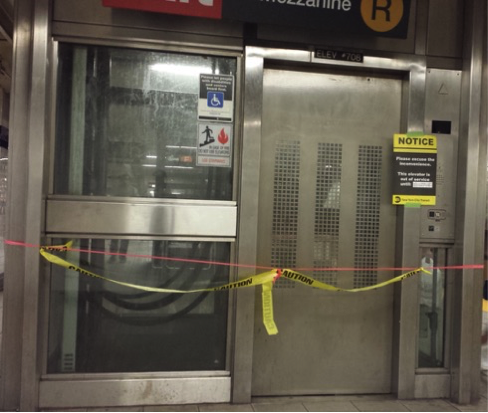
It’s 9:30pm and finally time to relax after an extended day at work. I make my egress to Bowling Green station, only a few steps away from our office. For the majority of people that live 1 stop away near the Borough Hall station in Brooklyn, like I do, this would mean reaching the comforts of home in 15 minutes or less. As a person who uses a wheelchair, however, my daily commute is significantly less straightforward.
New York City Transit operates the best transit service in the country, running with astonishing frequency 24 hours a day. This level of performance allows most New Yorkers access to nearly every part of the city in exchange for the $2.75 fare.
But for people who are unable to use stairs, whether due to age, injury, disability, luggage, or a stroller, the transit landscape in New York is markedly different. Of the 469 subway stations, only 109 (23%) are wheelchair accessible via elevators, and of those, 6 are accessible in only one direction. The other 360 stations are completely off limits, rendering surrounding neighborhoods, with their apartments, jobs, and other destinations, inaccessible except by a long walk, a much slower bus, or much more expensive taxi. As it stands, the New York City subway system is failing its passengers with disabilities, despite the fact that the 1990 Americans with Disabilities Act legally binds them to do exactly the opposite.
A visualization illustrates what I mean. Matthew Ahn, a subway blogger, redrew the famous subway map showing only the stations that are wheelchair accessible. The resulting image is shockingly sparse, particularly in the Bronx and Brooklyn, as illustrated below (this map was drawn before 34 St Hudson Yards opened in September 2015).
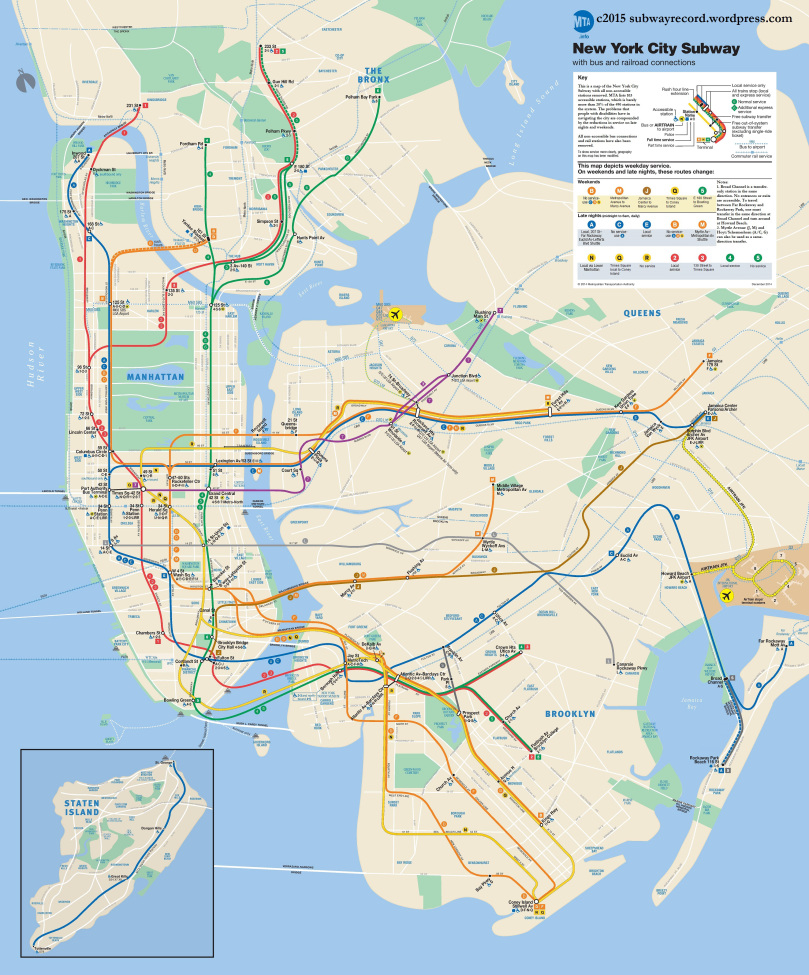 Source: https://subwayrecord.wordpress.com/2015/03/26/the-mtas-accessibility-gap/
Source: https://subwayrecord.wordpress.com/2015/03/26/the-mtas-accessibility-gap/
Having less than a quarter of the subway wheelchair accessible is bad enough, but this is only part of the problem. Subway station elevators are notoriously slow, unsanitary, poorly located, and unreliable.
With such meager coverage, elevator reliability is paramount to providing a minimum level of accessibility within the subway system and yet it continuously falls short. I’ve logged every encounter I’ve had with an out of service elevator since moving to the city in 2014. Thus far I’ve been faced with 202 out of service elevators, an average of 2.5 times per week. On most of these trips, text alerts have warned me about elevator outages. However, there have been 37 instances where I was faced with a surprise outage, forcing me to ask a friend or fellow passenger to carry my wheelchair as I walk stairs on crutches. Overall, these 202 instances have cost me over 18 hours of delay. And I am one of the lucky ones. If I were unable to walk stairs, my delays and abandoned trips would be far worse. If you need further evidence of the severity of New York City Transit’s elevator reliability problem, just visit its real-time elevator and escalator status webpage.
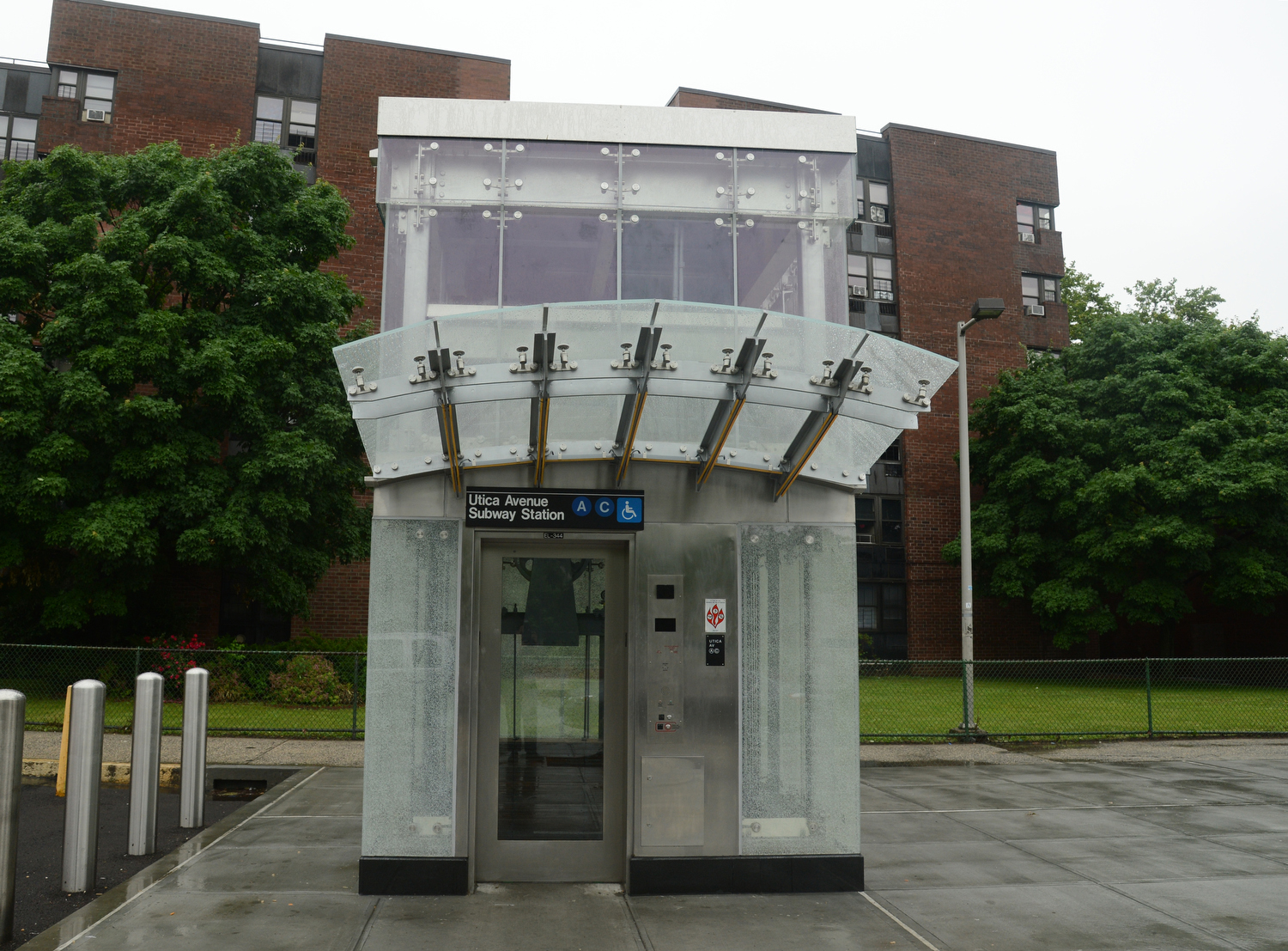
A ribbon-cutting ceremony was held Fri., June 13, 2014 at the Utica Av. Station on the A/C lines to officially open three elevators that make the station more accessible.
Photo: Marc A. Hermann / MTA New York City Transit
Although elevator unreliability reduces subway accessibility, conditions within them create a hostile environment. Elevators across the system are frequently hosts to pools of urine, especially the street elevators at the busiest stations. Besides contributing to the aromatics, the pools of urine will make their way to the hands and homes of wheelchair users who cannot avoid rolling through them to get on the subway.
Elevator location and speed also pose inconveniences. Elevators are frequently located at platform ends and far from the street elevators, which forces people who need elevators to walk up to two blocks out of their way to get to the street or platform. Nearly every elevator in the system is also excruciatingly slow, particularly at stations where elevators serve multiple floors, such as Jackson Hts-Roosevelt Ave, or Bowling Green. At Bowling Green, for example, trains during the peak hour often arrive more frequently than the street elevator which means that most mornings, people with disabilities exit the station not with the passengers on their train but with the passengers on the following train, highlighting the added time penalty.
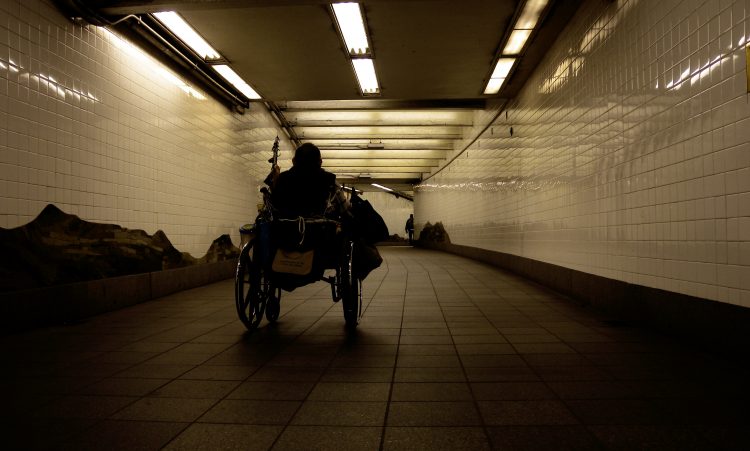 “Another Long Day” by Tenzin TC Wangchuk is licensed under CC BY 2.0
“Another Long Day” by Tenzin TC Wangchuk is licensed under CC BY 2.0
Given this litany of obstacles, tonight it takes me 35 minutes to get home, not the 15 minutes it should have taken. Borough Hall, my home station, is only accessible in the Manhattan direction for the 4 and 5 trains. To get home from Bowling Green station, I must take a northbound 4 or 5 train to Fulton Street, and then take two elevators to transfer to a Brooklyn Bound A or C train to Jay Street-MetroTech. This amounts to an added time penalty of 20 minutes from Manhattan to Brooklyn each weekday, or 85 hours a year simply for using a wheelchair.
To remedy this inequity and fulfill the intention of the 1990 Americans with Disabilities Act, New York City Transit must add new elevators to the subway system, improve cleaning and maintenance, add redundancy to existing elevators, and make customer experience a priority when rehabilitating stations. A recent report from the Rudin Center reveals that for less than $2 billion, the subway system could be made entirely accessible, with the additional benefit of reducing demand on Access-a-Ride. Such an undertaking could pay for itself in as little as four years. However, unless New York City Transit commits to making these improvements, my home will continue to be one of the most difficult cities for people with disabilities to navigate, when, given its density and plethora of activities, it should be among the easiest.
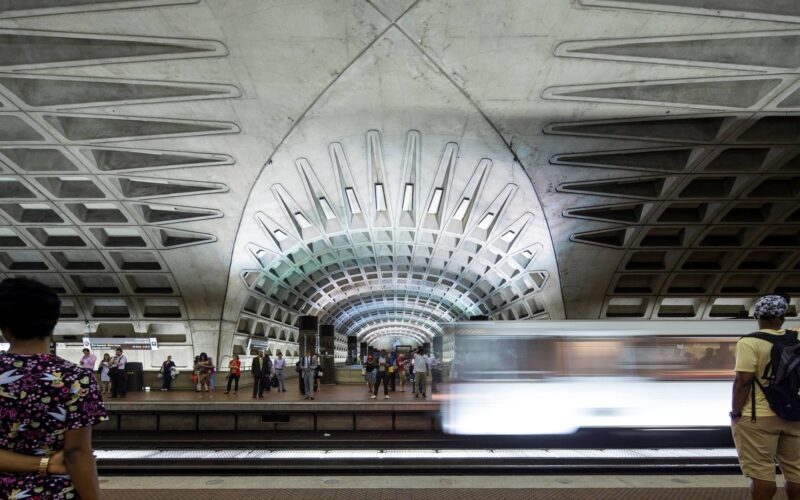 On the Brink: Will WMATA’s Progress Be Erased by 2024?
On the Brink: Will WMATA’s Progress Be Erased by 2024?
The experience of being a WMATA rider has substantially improved over the last 18 months, thanks to changes the agency has made like adding off-peak service and simplifying fares. Things are about to get even better with the launch of all-door boarding later this fall, overnight bus service on some lines starting in December, and an ambitious plan to redesign the Metrobus network. But all of this could go away by July 1, 2024.
Read More Built to Win: Riders Alliance Campaign Secures Funding for More Frequent Subway Service
Built to Win: Riders Alliance Campaign Secures Funding for More Frequent Subway Service
Thanks to Riders' Alliance successful #6MinuteService campaign, New York City subway riders will enjoy more frequent service on nights and weekends, starting this summer. In this post, we chronicle the group's winning strategies and tactics.
Read More